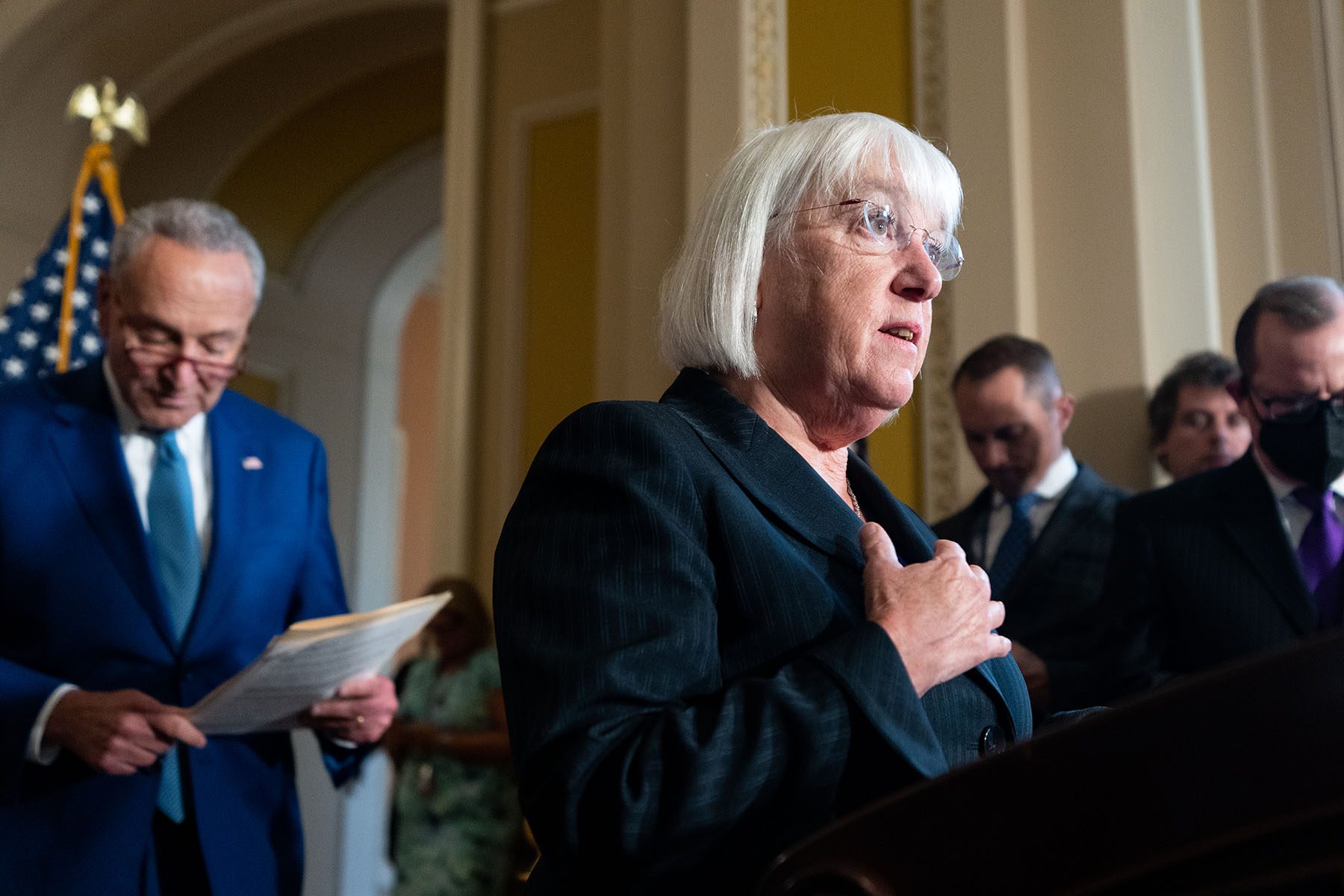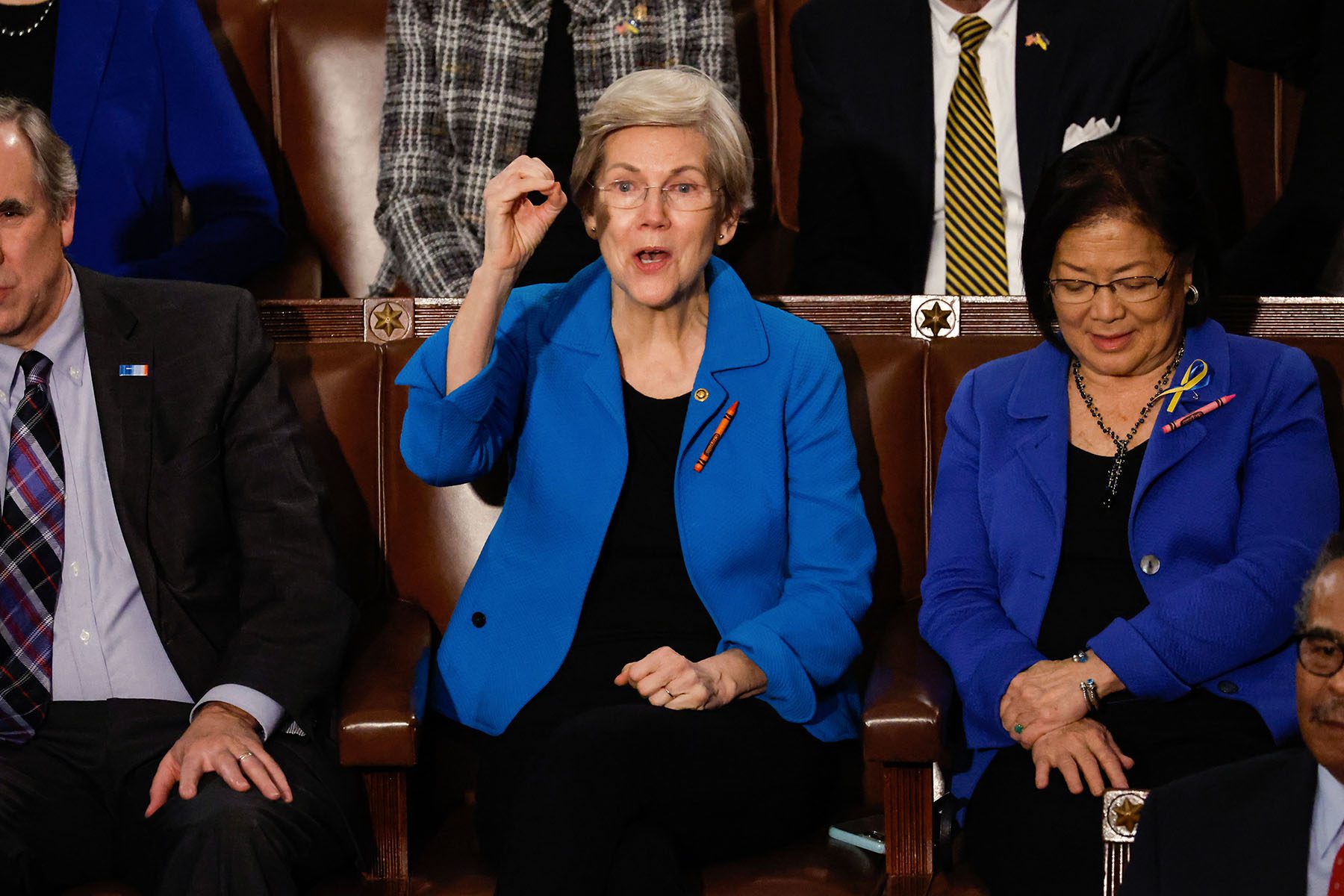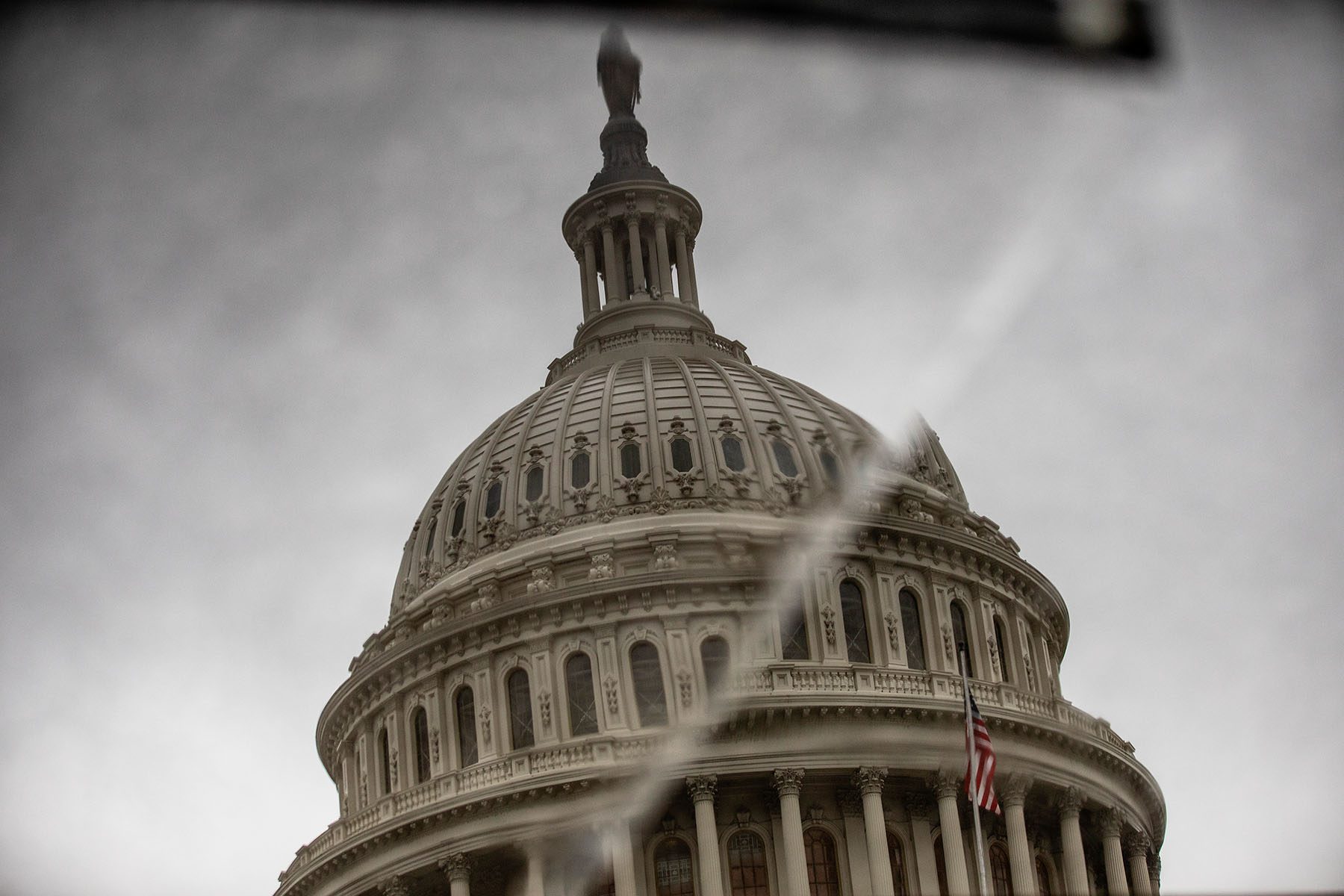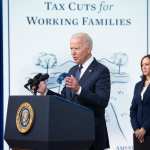Your trusted source for contextualizing the news. Sign up for our daily newsletter.
The child care crisis is not a partisan issue. About 3 in 5 Republican voters and 4 in 5 Democrats agree the federal government needs to take action. The majority in both parties say it’s an economic imperative, and putting more money into it is a good use of taxpayer dollars.
So why can’t a child care bill get passed?
This year, Democrats are uniting behind a push to pass child care legislation, with two bills introduced last week and President Joe Biden name checking the issue as a priority during his State of the Union address. But with a divided Congress, and so far no Republican proposals, hopes are low that anything can happen. And though pandemic-related funds helped stabilize the sector while it was in freefall, those funds will dry up by September.
Estimates of how much the crisis is costing the U.S. economy put the figure at more than double what it was just five years ago: $122 billion in 2022. At what point does a problem become so severe it can’t be ignored, advocates wonder. And as we turn a corner to the 2024 elections, at what point does child care hurt Republicans and Democrats if they can’t come to the table with an agreement?
“What we need is honest discussion where people come to the table and talk about, ‘Here’s what works in this bill and what we should think about,’” said Linda Smith, director of the early childhood initiative at think tank the Bipartisan Policy Center. “That’s where the partisanship really is a problem.”
For Democrats, child care is a major party plank that unites moderates and progressives.
It’s the issue that first got Sen. Patty Murray of Washington into politics 30 years ago, when child care was nowhere near the list of top priorities for Democrats. This year, her “strategy is to up the ante,” Murray told The 19th last week. “We want everyone to know child care is on the agenda.”

She plans to reintroduce her Child Care For Working Families Act this Congress, a bill she has been introducing since 2017. The legislation would cap child care costs at 7 percent of a family’s income, raise wages for child care workers to be on par with elementary school teachers, and invest funding into states to increase the availability of preschool programs for 3- and 4-year-olds from low- and moderate-income families.
The policies in that bill were the model for the proposed $400 billion investment in universal child care that was a part of the president’s Build Back Better package last year, which failed to pass Congress.
Murray convened a group of legislators, child care workers and parents affected by the crisis ahead of the State of Union. Several dozen people, including Democratic members of Congress, wore crayon pins to the address in an effort to put the spotlight on child care.
Now the chair of the Senate Appropriations Committee, Murray in December helped pass $1.8 billion in additional funds for the Child Care and Development Block Grant (CCDBG), a 30 percent increase to one of the central federal funding mechanisms for the child care industry. The funds primarily go to states to help subsidize care for low-income children. The increased investment is estimated to help serve an additional 130,000 children.
This year, she plans to continue pushing for more funds to the block grant, an avenue that might bring some success. The increase for CCDBG was passed with bipartisan support and, last year, five Republican senators signed on to a letter requesting that funds for CCDBG double in the next five years. In the House, 15 Republicans signed a similar letter calling for more CCDBG funding.
“Now, more than ever, access to affordable high-quality child care remains a barrier for many parents who wish to enter and remain in the workforce,” they wrote in April. “Given the importance of this program to working families across the country and the fundamental role of child care in our economic recovery, there is a critical need for robust CCDBG funding.”
Smith said that was a sign of areas in which Republicans and Democrats can agree. Last year, former Sen. Richard Burr of North Carolina and Sen. Tim Scott of South Carolina, both Republicans, put forth a child care proposal that would have increased family eligibility for CCDBG funding, capped family copays at 7 percent of their income and helped increase pay for staff. The bill was not as expansive or costly as what the Democrats have proposed, but it had many of the same key goals.
“We were very happy to see that because the Republicans, for the most part in the past, have been vocal about what they were opposed to but had never put anything out there as, ‘This is what we would support,’” Smith said.
The bill picked up 13 additional Republican cosponsors, but stalled. It has not been reintroduced yet this Congress.
The friction lies in where to put child care dollars and how to structure them. Murray believes that continuing to “put money into CCDBG will not solve the issue,” arguing instead for broader scale changes to the child care model.
Sen. Elizabeth Warren of Massachusetts and Rep. Mikie Sherrill, a Democratic congresswoman from New Jersey, have introduced a bill that would build on the current model and create a new program: a network of federally funded child care options where families would pay no more than $10 a day for care. It would also cap costs at 7 percent of families’ income and put costs on a sliding scale so that lower-income families making less than 75 percent of their state’s median income would not pay anything.

Sherrill said this kind of legislation is personal. The experience of finding child care for her eldest child 17 years ago meant being turned away by centers that only took babies over a year old, and if she did find one that took infants, the waiting lists were extensive. When she finally found care for her child, it was “exorbitantly expensive.”
Today, both red and blue states have been using coronavirus child care funds to test out potential solutions, setting the groundwork for a federal push and giving child care advocates in Congress some ammunition for the battle ahead.
“We have some models, and we’ll have more models going forward, on where government is investing and making real change and working very well. And I think that’s what we’ve got to sell to people on both sides of the aisle,” Sherrill said.
Sherrill and Warren’s bill, which is an iteration of one Warren has been introducing for several years, was estimated in 2019 by Moody’s to come with a price tag of $700 billion over 10 years. It is modeled after one of the most successful child care programs in the country, and one that is entirely government funded: the military child care program.
In the 1980s, military child care was plagued by rampant health and safety violations and allegations of sexual abuse. Congress overhauled the system, requiring the Department of Defense to take over funding its child care programs, raise wages and subsidize care. And while the system still faces challenges — waitlists remain long — the military child care system has some of the highest accreditation standards of any private program. The Department of Defense invests about $1 billion into it annually.
Smith, one of the architects of the military program, said its success lies in creating a reliable revenue stream for providers that keeps centers open even when there is high family turnover. At the end of the day, money needs to be earmarked to cover those costs, which would then allow centers to raise wages, like in the military model.
So for something like Warren or Murray’s bills to pass, there has to be a willingness to spend. And Republicans this Congress have been clear their goal is to lower spending. That will mean making cuts to programs that are important to constituents, and it’s unclear whether child care will be one of them, said Anne Hedgepeth, chief of policy and advocacy at Child Care Aware, a leading child care advocacy organization.
“That dynamic is one that’s hard to totally read right now and hard to know where child care will fit in that equation — all the more reason to keep pushing Congress to continue to resource child care,” Hedgepeth said.
The United States already holds abysmal records in several family-related areas. It is one of only seven nations in the world that does not offer paid parental leave. Child poverty rates in the United States are among the highest of all developed nations. Only 0.2 percent of the county’s GDP is spent on child care for kids under 2. Overall, the U.S. spends less on children than most other developed nations.
Because of that, Republicans have faced some pressure to support families and children, particularly since federal abortion protections were eliminated when the Supreme Court overturned Roe v. Wade this summer.
Abby McCloskey, a former policy director on various Republican and independent presidential campaigns, argued in a July op-ed in Politico that “there is perhaps no larger generational opportunity for Republicans to reverse course and support mothers than in the wake of the Roe v. Wade Supreme Court decision.” Morally and economically, she wrote, “the GOP must demonstrate its commitment to caring for those babies and their parents.”
Polling also indicates Republican voters are upset that Congress hasn’t passed child care legislation. In a poll of about 1,000 registered voters conducted in mid-November by the First Five Years Fund, an early childhood education advocacy group, 65 percent of Republicans said they felt their member of Congress should work with the Biden administration to expand options for affordable child care.
Some of that message has resonated at the state level. There has been an uptick in Republican governors talking about child care and early learning and putting that money into their budgets this year, Hedgepeth said.
Missouri Gov. Michael Parsons said in his state of the state address last month that “Missouri businesses consistently rank the lack of child care options as a barrier to recruiting and retaining employees, and we have an opportunity to assist,” calling for $78 million to increase child care subsidy rates.
Similarly in Arkansas, Gov. Sarah Huckabee Sanders has branded herself as an “education governor,” unveiling a significant education plan last week, and putting in motion plans to encourage businesses to offer child care for working families and expand pre-kindergarten access.
Of the 35 governors that have held state of the state addresses so far, 40 percent of Republicans and 60 percent of Democrats have mentioned child care, according to an analysis by the First Five Years Fund.
“It’s remarkable to see governors from every state, political leaning, or geographical location agree on one common thing: child care and early learning help parents go to work and grows states’ economies,” said Sarah Rittling, the fund’s executive director, in a statement. “From New York to North Dakota, our analysis makes clear that states’ economic success depends on elected officials on both the state and federal level helping parents find and afford the child care options they desperately need.”
For politicians in both parties, the economic imperative might also serve as a tool to move the conversation forward. At his State of the Union address, Biden touted low unemployment and the growth of new manufacturing jobs. Attracting parents to those jobs, and particularly mothers, is “not going to happen unless you have child care for those families,” said Wendy Wagner Robeson, a senior research scientist at the Wellesley Centers for Women who specializes in child care policy.
“You can’t get anywhere without child care,” she said.
If nothing else, proposals like Murray’s and Warren’s are, in part, designed to keep applying pressure, challenging others to present their own solutions. And from constituents, at least, the pressure is already there, Hedgepeth said.
“I do think that’s moving everyone in the same direction on this issue — you see that in the polling, in talking to folks about how important child care is, and now it’s about how to get it done,” she said. “That’s the next step, but the context is that there is some collective energy.”







